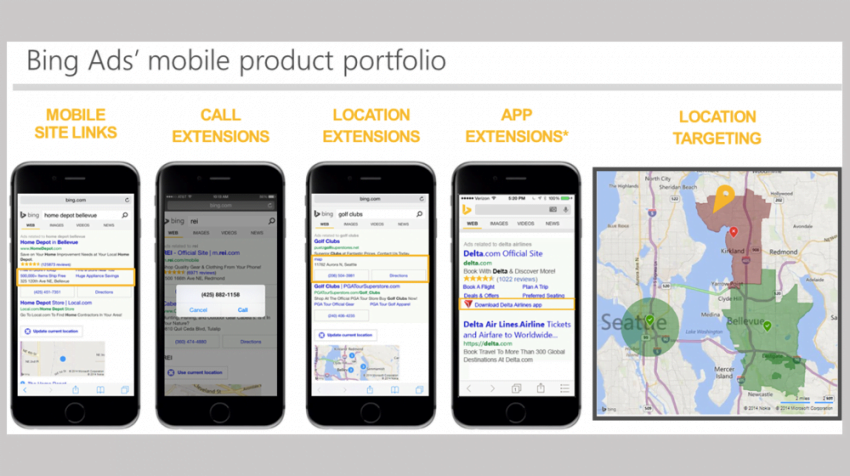

Bing Ads fully rolled out the pilot launch of its mobile ad platform recently, setting the stage for competition with Google AdWords putting Bing Ads on par with the undisputed search leader’s ad network.
The update to Bing Ads brings with it expanded device targeting, allowing for greater control of bids specific to device type. Advertisers can now target users of desktops, laptops, tablets or smartphones specifically.
Expanded Device Targeting for Bing Ads
This form of control not only specifies target, but also tailors the adjusted bid ranges. The following table shows the bid percentages by device type on Bing’s new platform.

By having the ability to target audiences more specifically, advertisers can measure ROI and make changes accordingly to improve return, such as excluding devices that are under-performing. If your business notices that desktop ads produce fewer results, opting out of them is as simple as setting the range to -100 percent. Previous versions did not allow this.
Further modifications can be made in advanced campaign settings with scheduling and location specific ads.

As a business you are now able to target customers that are in your vicinity by the devices they are using. When you consider that current estimates place smartphone searches at 82 percent, this is a valuable proposition.
With mobile quickly becoming the go-to medium, the ability to opt-out of desktop was a desired feature by many advertisers. This move will further support the near mobile-only campaigns preferred by small businesses and their target audiences.
Bing to Google Connectivity
Another strategy employed by Bing is bid adjustments across search engines. By setting value parameters equal to AdWords, Bing users are now able to leverage imports from Google and maintain any preset adjustments. Bing’s features can be accessed via Mac and Windows. This can be done through Bing Ads Editor, through Bing’s API and globally through Bing Ads Web Interface — including Google Import.
The new move establishes Bing Ads as a clear alternative to Google AdWords offering more options for small business owners.
[“Source-smallbiztrends”]




